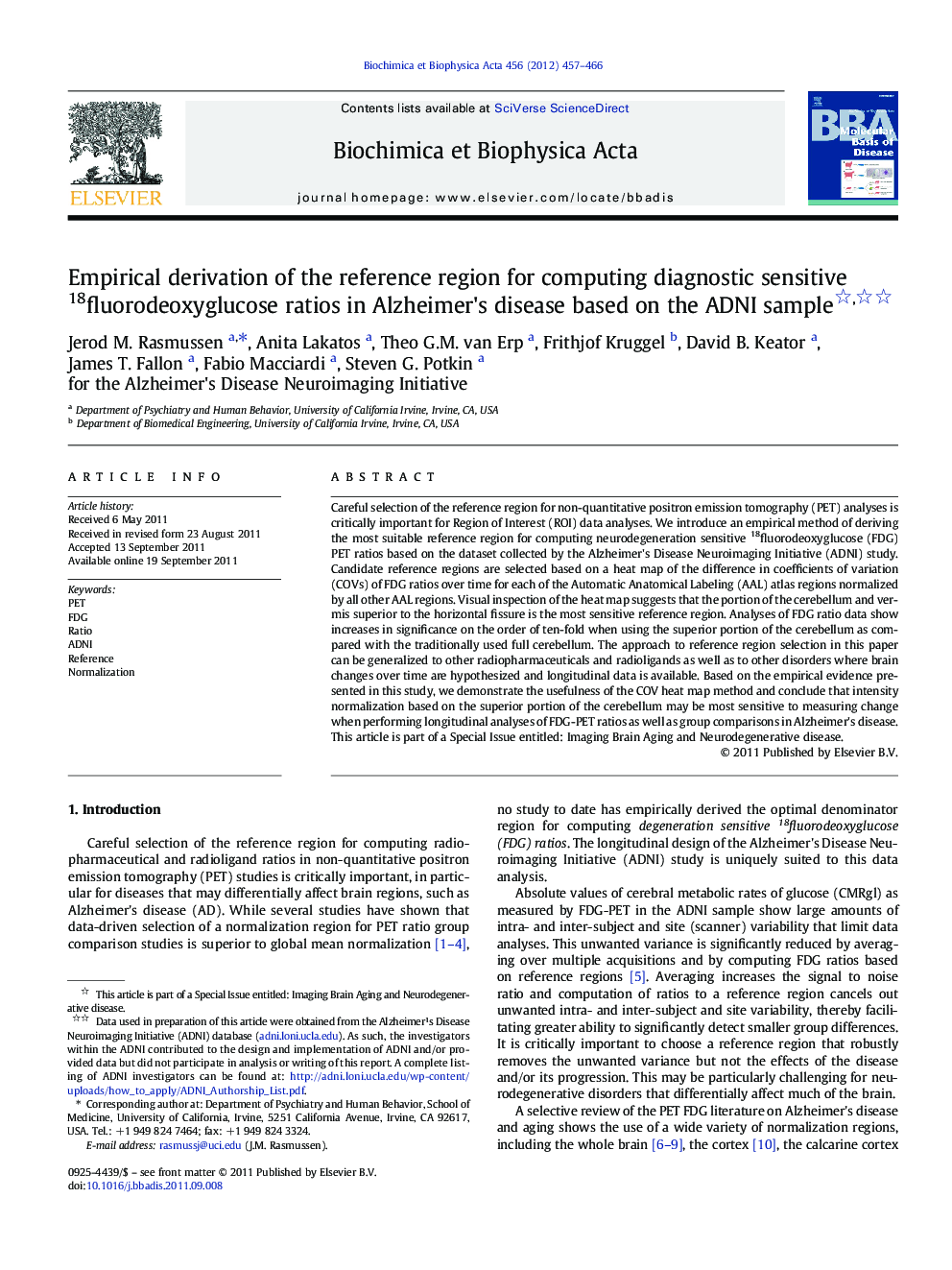| کد مقاله | کد نشریه | سال انتشار | مقاله انگلیسی | نسخه تمام متن |
|---|---|---|---|---|
| 1904978 | 1534686 | 2012 | 10 صفحه PDF | دانلود رایگان |

Careful selection of the reference region for non-quantitative positron emission tomography (PET) analyses is critically important for Region of Interest (ROI) data analyses. We introduce an empirical method of deriving the most suitable reference region for computing neurodegeneration sensitive 18fluorodeoxyglucose (FDG) PET ratios based on the dataset collected by the Alzheimer's Disease Neuroimaging Initiative (ADNI) study. Candidate reference regions are selected based on a heat map of the difference in coefficients of variation (COVs) of FDG ratios over time for each of the Automatic Anatomical Labeling (AAL) atlas regions normalized by all other AAL regions. Visual inspection of the heat map suggests that the portion of the cerebellum and vermis superior to the horizontal fissure is the most sensitive reference region. Analyses of FDG ratio data show increases in significance on the order of ten-fold when using the superior portion of the cerebellum as compared with the traditionally used full cerebellum. The approach to reference region selection in this paper can be generalized to other radiopharmaceuticals and radioligands as well as to other disorders where brain changes over time are hypothesized and longitudinal data is available. Based on the empirical evidence presented in this study, we demonstrate the usefulness of the COV heat map method and conclude that intensity normalization based on the superior portion of the cerebellum may be most sensitive to measuring change when performing longitudinal analyses of FDG-PET ratios as well as group comparisons in Alzheimer's disease. This article is part of a Special Issue entitled: Imaging Brain Aging and Neurodegenerative disease.
Figure optionsDownload high-quality image (392 K)Download as PowerPoint slideHighlights
► This study investigates reference region selection in quantifying Alzheimer's disease using 18fluorodeoxyglucose PET.
► A novel approach using coefficients of variation and emphasizing a longitudinal design was used.
► Superior portion of the cerebellum was shown to be stable over time.
► Superior portion of the cerebellum was found to be the most sensitive to detecting changes over time.
► Superior portion of the cerebellum was identified as the most effective region for detecting group differences.
Journal: Biochimica et Biophysica Acta (BBA) - Molecular Basis of Disease - Volume 1822, Issue 3, March 2012, Pages 457–466